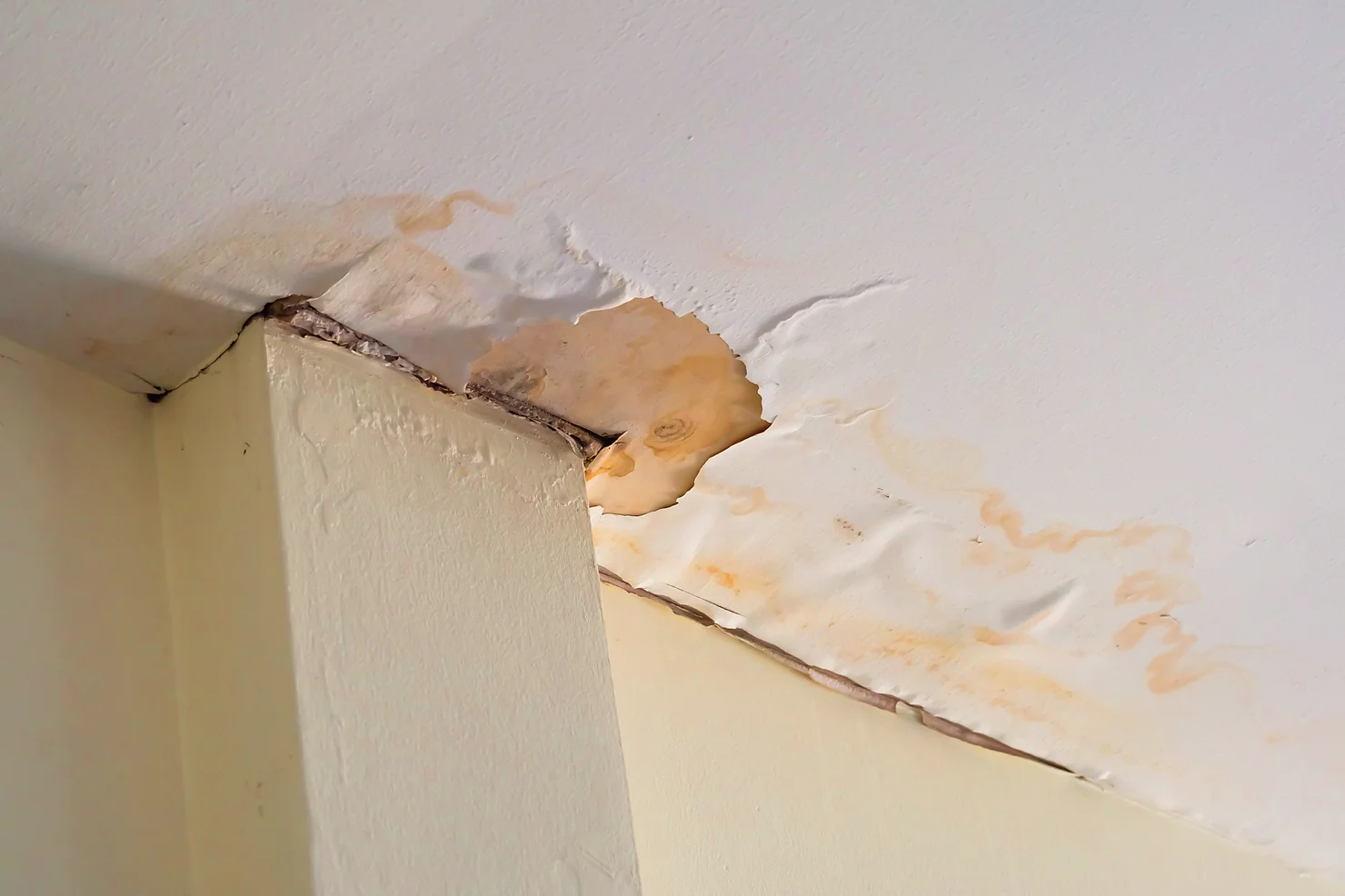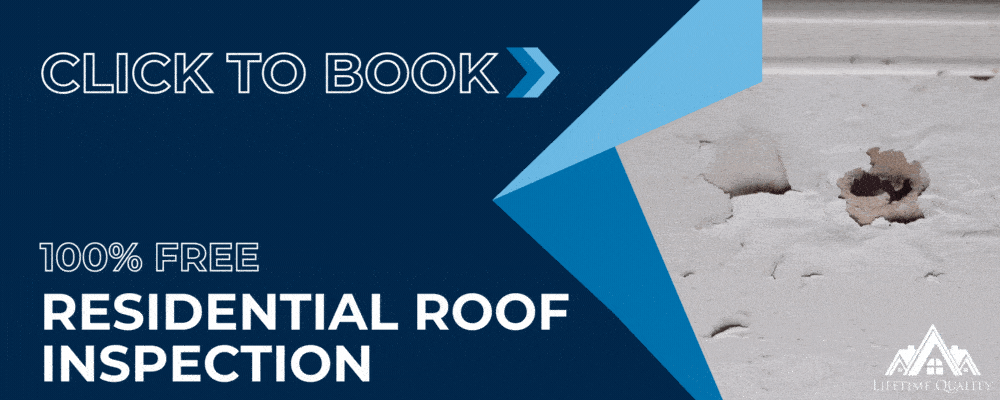
Your Official Guide to Gutter Materials
Learn about the different types of gutter materials available for your home. Choose the best one that suits your needs …

Is your roof leaking? Don't panic just yet. Understanding why your roof is leaking is the first step in finding a solution. In this article, we will explore the common causes of roof leaks and how to address them effectively. Whether you're dealing with a minor drip or a major water infiltration, we've got you covered.
A leaking roof can cause significant damage to your home if left unattended. Recognizing the signs of a roof leak is crucial in order to take immediate action. One of the most obvious signs is water stains or discoloration on your ceiling or walls. These stains may appear as brown spots or patches, indicating that water has penetrated through your roof and is seeping into your home.
Another telltale sign of a roof leak is the presence of mold or mildew. These can thrive in damp environments, making your attic or ceiling an ideal breeding ground. If you notice a musty odor or see mold growth, it's a clear indication that you have a leak somewhere in your roof.
In addition to stains and mold, you may also observe water dripping or puddles forming in your attic or on the floor. These are obvious signs of an active roof leak and should not be ignored. It's important to address the issue promptly to prevent further damage to your home's structure and belongings.
Understanding the common causes of roof leaks can help you pinpoint the source of the problem and determine the best course of action. One possible cause is damaged or missing shingles. Over time, shingles can become worn out, cracked, or torn, allowing water to penetrate through your roof's protective layers. Additionally, flashing around chimneys, vents, and skylights can deteriorate, creating gaps for water to seep in.
Clogged gutters and downspouts are another potential culprit. If your gutters are filled with debris, water can back up and overflow onto your roof, causing leaks. Poor installation or the use of low-quality materials can also lead to leaks, especially in areas prone to extreme weather conditions. It's important to note that even a small issue, such as a tiny hole or loose nail, can result in a leak if left unattended.
Identifying the cause of your roof leak may require a thorough inspection of your roof and attic. If you're not comfortable doing this yourself, it's best to hire a professional who can accurately assess the situation and provide appropriate recommendations for repair.
One of the most obvious signs of a leaking roof is water stains on your ceilings and walls. These stains may appear as discolored patches or even dark spots. They are usually caused by water seeping through the roof and making its way into your home. If left untreated, these stains can lead to further damage, including the growth of mold and mildew. It's important to address water stains as soon as possible to prevent any additional structural issues.
Another sign of a roof leak is the presence of dripping or pooling water. This can be especially noticeable during heavy rainstorms or after snow has melted. If you notice water dripping from your ceiling or collecting in certain areas of your home, it's a clear indication that there is a leak in your roof. Ignoring these signs can lead to further damage and potential safety hazards.
If you detect a musty odor in your home, it could be a sign of a roof leak. When water seeps into your home, it creates the perfect environment for mold and mildew to grow. Mold growth can be hazardous to your health, causing respiratory issues and allergies. If you notice a musty smell, especially in areas near your roof, it's important to investigate further and address the issue promptly.
When inspecting the exterior of your home, keep an eye out for damaged or missing shingles. Shingles act as a protective layer for your roof, and any damage or missing pieces can create vulnerabilities. Strong winds, heavy rainfall, or other weather-related events can cause shingles to become loose or completely dislodged. If you notice any signs of damage, it's important to have them repaired or replaced to prevent water from seeping into your home.
One of the first signs of a leaking roof that you may notice from the outside is water stains or discoloration on the surface of your roof. These stains are often caused by water pooling or seeping into the roof shingles, leaving behind visible marks. If you spot any discoloration or stains on your roof, it's important to have it inspected by a professional roofer to determine the source of the leak and prevent further damage.
Clogged gutters and downspouts can also be a sign of a roof leak. When debris, leaves, or other materials accumulate in your gutters, it can prevent water from properly draining off your roof. This can lead to water pooling on your roof and finding its way into your home. Regularly cleaning and maintaining your gutters and downspouts can help prevent roof leaks and ensure proper water drainage.
When it comes to roof leaks, time is of the essence. Ignoring a leak or delaying repairs can have serious consequences for your home. Moisture from a leaking roof can seep into your walls, insulation, and electrical components, causing extensive damage and potentially leading to mold growth.
In addition to structural damage, roof leaks can also affect the overall energy efficiency of your home. Water infiltration can compromise the insulation in your attic, making it less effective in regulating temperature and increasing your energy bills.
Addressing roof leaks promptly not only prevents further damage but also saves you money in the long run. The sooner you take action, the less extensive the repairs are likely to be. Don't wait until a small drip turns into a major flood. Act quickly to protect your home and your investment.
If you're a handy homeowner and feel confident in your abilities, you may choose to tackle the roof leak repair yourself. However, it's important to proceed with caution and take the necessary safety precautions. Here are a few DIY tips to help you get started:
While DIY roof leak repair can be cost-effective, it's important to acknowledge your limitations. If you feel unsure or uncomfortable with the repair process, it's best to seek professional assistance to avoid causing further damage.

Not all roof leak repairs can or should be done by homeowners. There are certain situations where it's best to call a professional roofing contractor to ensure the job is done correctly and safely. Here are a few scenarios where professional assistance is recommended:
Remember, hiring a professional doesn't necessarily mean it will be more expensive. In fact, a professional roofer may be able to identify and address additional issues that could save you money in the long run. It's worth considering their expertise and experience when deciding whether to tackle the repair yourself or seek professional assistance.
Prevention is always better than cure, especially when it comes to roof leaks. While some causes of roof leaks may be beyond your control, there are steps you can take to minimize the risk and prolong the life of your roof. Here are a few preventive measures you can implement:
By implementing these preventive measures, you can significantly reduce the likelihood of experiencing future roof leaks. Regular maintenance and proactive care will not only extend the lifespan of your roof but also provide you with peace of mind knowing your home is protected.
The cost of roof leak repair can vary depending on several factors, such as the extent of the damage, the type of roof, and the materials required for the repair. Minor repairs, such as replacing a few damaged shingles, may cost a few hundred dollars. However, if the damage is extensive or requires a complete roof replacement, the cost can reach several thousand dollars.
It's important to note that delaying repairs can lead to more significant damage and higher repair costs in the long run. Addressing a minor leak promptly can save you money by preventing further damage to your home's structure and belongings. It's always best to consult with a professional roofing contractor to obtain an accurate estimate and understand the scope of the repair.
Whether or not your insurance policy covers roof leaks depends on several factors, including the cause of the leak and the terms of your policy. Most standard homeowner's insurance policies cover roof leaks caused by sudden and accidental events, such as storms or falling trees. However, they may not cover leaks resulting from normal wear and tear or lack of maintenance.
To determine if your roof leak is covered, review your insurance policy or consult with your insurance provider. It's important to understand the coverage limits, deductibles, and any exclusions that may apply. Documenting the damage and keeping records of repairs and maintenance can help support your claim if necessary.
A leaking roof is a problem that should never be ignored. Understanding the common causes of roof leaks and the importance of prompt action is crucial in preventing further damage to your home. Whether you choose to tackle the repair yourself or seek professional assistance, addressing the issue promptly is key.
By recognizing the signs of a roof leak, understanding the common causes, and implementing preventive measures, you can minimize the risk of future leaks and prolong the life of your roof. Regular maintenance, proper ventilation, and keeping your gutters clean are simple steps that can make a significant difference in the integrity of your roof.
If you're unsure or uncomfortable with the repair process, it's always best to hire a professional roofing contractor, like Lifetime Quality. They have the expertise, experience, and safety equipment to handle the job efficiently and effectively. Don't let a minor leak become a major problem. Take action today to fix your roof leak and protect your home.